#1903-95
Text
EVERY TIME I SEE MICKEY MOUSE MISSING AN EAR RATHER THAN THE FAMOUS EQUATION E=mc2
In 1932, Ernest Walton and John Cockcroft split the nucleus of a Li (lithium) atom, often termed ‘splitting the atom’. The experiment was carried out in the Cavendish Laboratory at the University of Cambridge, England.
APPLES AND ATOMS BY EILIS O’CONNELL
Apples and Atoms by Eilís O’Connell RHA Celebrating Ernest T.S. Walton 1903-95, Nobel Laureate
In 1932, Ernest Walton and John Cockcroft split the nucleus of a Li (lithium) atom, often termed ‘splitting the atom’. The experiment was carried out in the Cavendish Laboratory at the University of Cambridge, England. Albert Einstein declared that their experiment…
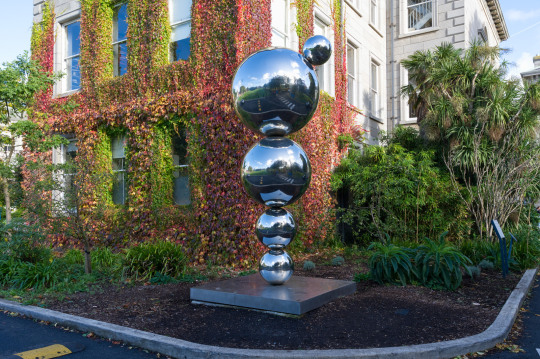
View On WordPress
#1903-95#Cavendish Laboratory#Celebrating Ernest T.S. Walton#College Art Collections#E=mc2#Eilís O’Connell#Ernest Walton#external visual arts professionals#Fotonique#Infomatique#John Cockcroft#metal#Nobel Laureate#Public Art#School of Physics#Sculpture#split the nucleus of a Li#the students#trinity college#Walton family#William Murphy
0 notes
Text
Olga (Ollie) Burgoyne
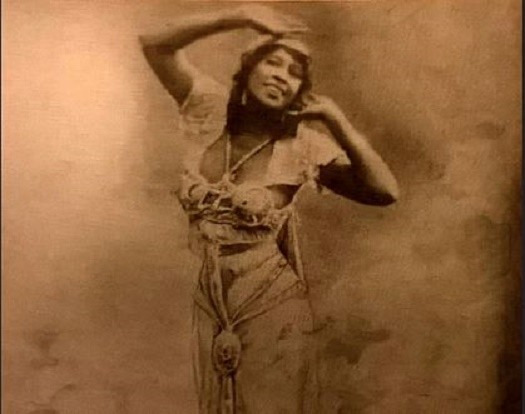
Olga “Ollie” Burgoyne, also known as Ollie Burgoyne-Calloway, was a singer and dancer specializing in Russian and other ethnic dances. She was also an actress and businesswoman who gained popularity during the Harlem Renaissance and left her mark as one of the most influential African American dancers and choreographers of that time.
Ollie Burgoyne was born in Chicago, Illinois, on June 13, 1879. She was part Russian and part Creole. Ollie’s cousin, Ida Forsain, toured Russia and specialized in Cossack dancing. Influenced by Forsain, Burgoyne debuted at age 17 in John Isham’s Oriental America nightclub in Chicago in 1896. In 1901, at age 22, she embarked on an eight-year tour of Europe (Germany, France, Denmark, Switzerland, Hungary, and Russia) with seven singing and dancing girls known as the Louisiana Amazon Guards.
In 1903, Burgoyne briefly returned to the United States and joined the cast of the operetta In Dahomey, which was the first African American musical to be performed on Broadway. After her performance, Burgoyne formed Duo Eclatant with partner Asher Watts. She also founded the Burgoyne Musical Company.
During her years in Russia (1904-1914), Burgoyne performed in many prestigious venues, including the Krestovskiy Garden Amusement Park (St. Petersburg) and the Aumont Theater (Moscow). She also made side trips to Odessa in what is now Ukraine, Athens, Greece, Istanbul, Turkey, and Cairo, Egypt. She opened the Maison Creole lingerie store in downtown St. Petersburg (Russia), where she employed a staff of 27. In August 1914, while Burgoyne was vacationing in Marienbad, Austria, World War I broke out, and she was unable to return to Russia and thus lost her businesses and properties there.
Between 1914 and 1929, Burgoyne continued to tour mainly in western Europe. Her specialties were Brazilian, Spanish, and Russian dances, which she mastered while traveling. She briefly returned to the United States during this period, where she performed in New York City, Chicago nightclubs, and Harlem’s Lafayette Theater. In 1925, Burgoyne produced two dance revues, Darktown Strutters, and Harlem Strutters, in New York. She also appeared in ten Broadway productions between 1926 and 1937.
In 1931, Ollie Burgoyne was named one of the eight major dancers and choreographers of the Harlem Renaissance, part of an elite group that also included Hemsley Winfield, Edna Guy, Randolph Sawyer, Asadata Dafora, Katherine Dunham, Charles Williams, and Pearl Primus. In April 1936, when Burgoyne was 57 years old, she appeared in the play Mississippi Rainbow, performed at the Lafayette Theater. In the later years of her life, Burgoyne taught dance and worked periodically in the film industry, starring in movies such as Laughing (1930) and The Timid Ghost (1937). With a career spanning nearly 50 years, Ollie Burgoyne died on April 2, 1974, in Oxnard, California, at the age of 95.
141 notes
·
View notes
Text
Nikola Tesla and His Achievements
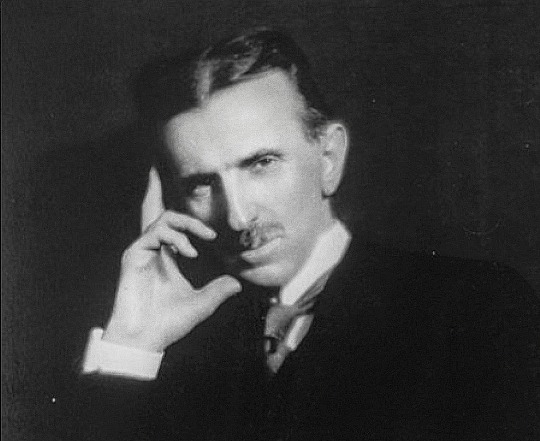
Although the system of world wireless power transmission consumed most of his attention throughout his life, Nikola Tesla still brought the world many wonderful inventions and discoveries. Stated in chronological order, some of the more notable ones are:
The rotating magnetic field, 1882;
System of arc lighting, 1886;
Tesla motor and system of alternating current power transmission that utilized the rotating magnetic field discovery creating polyphase systems of AC, 1888;

System of electrical conversion and distribution by oscillatory discharges, 1889;
Generators of high-frequency currents and effects of these, 1890;
Transmission of energy through a single wire without return, 1891;
The “Tesla coil,” or oscillation transformer, which was the basis to his wireless transmission of energy making Tesla the true father of radio, 1891;
Investigations of high-frequency effects and phenomena, 1891-93;
System of transmission of intelligence and power without wires, 1891-1905;

Neon light signs, 1893;
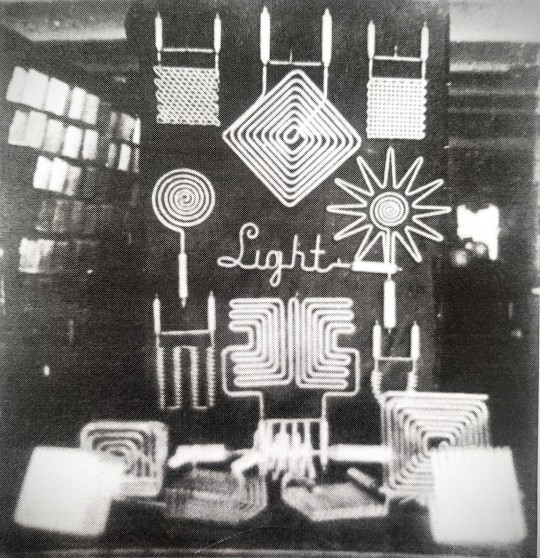
Researches and discoveries in radiations, material streams and emanations, today known as X-rays, and X-ray imaging, 1893-1898;

Mechanical oscillators and generators of electrical oscillations, 1894-95;
Radioactivity and cosmic ray discovery published in a series of papers in the "Electrical Review,” New York, 1896-1898;
High-potential vacuum tubes, 1896-1898;
Explained the harms of X-rays and safer ways to use them, 1897;
High-potential magnifying transmitter, 1897;
Economic transmission of energy by refrigeration, 1898;
Remote control, or what Tesla called his “Art of Telautomatics,” 1897-99;
Discovery of stationary electrical waves in the earth, 1899;

Art of transmitting energy by stationary waves through earth, 1899-1900;
Burning of atmospheric nitrogen, and production of other electrical effects of transcending intensities, 1899-1900;
Apparatus for the utilization of cosmic radiation, 1901;
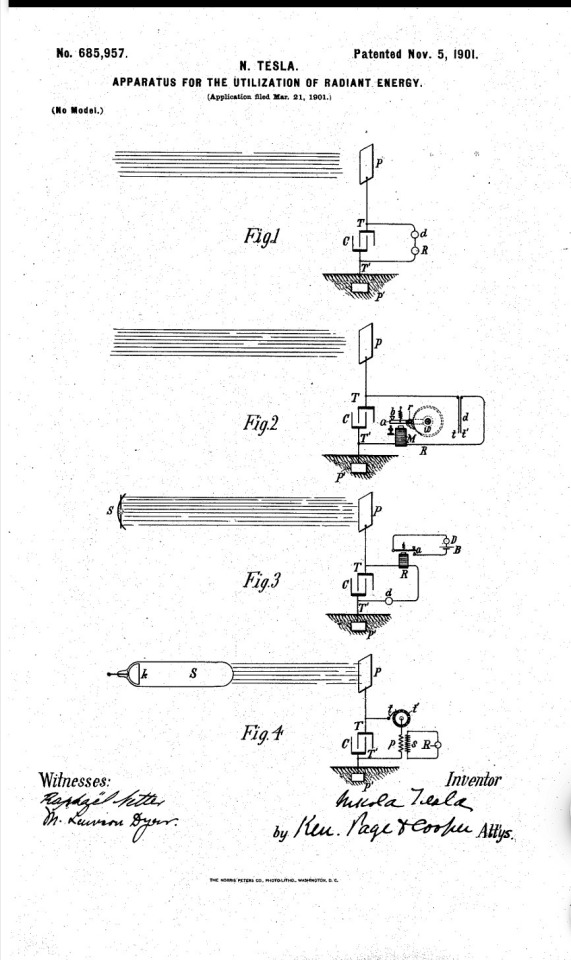
Art of Individualization. Tesla described this as a method of absolute privacy in wireless communication, 1902-1903;
Magnifying transmitter on a large scale, 1902;

Speedometers on new principles, means for lightning protection, types of steam and gas turbines, pressure and vacuum pumps and other apparatus, 1916-1926.
Teleforce, or his “New Art of Projecting Concentrated Non-Dispersive Energy Through Natural Media.” This is his particle beam weapon, circa 1930s.
235 notes
·
View notes
Text
Death years, Hazbin Hotel
Taken from the wiki & not fully confirmed ages and years. Any ages or years in red aren't confirmed, but I guessed them to make this post easier. But any ages or years with a star are confirmed.
Name | Age at death | YOB-YOD
Sir Pentious at 45* 1843*-1888*
Alastor at 30s 1903-1933*
Angel Dust at 35 1912-1947* (died in his mid 30s)
Nifty at 22* 1928-1950s
Husk at 75* 1895-1970s
Cherri Bomb at 20s 1960-1980s
Vaggie at 20s 1990-2010s
this means the oldest technically is (from their YOB to 2023)
Sir Pentious at 180 (45 years lived + 135 afterlived)
Husk at 128 years (75 lived + 53 afterlived)
Alastor at 120 (30 years lived + 90 afterlived)
Angel Dusk at 111 (30 years lived + 76 afterlived)
Nifty at 95 (22 years lived + 73 afterlived)
Cherri Bomb at 63 (20 years lived + 43 afterlived)
Vaggie at 33 years (20 lived + 13 afterlived)
but if they stopped ageing at death, the oldest would be:
Husk at 75 years old at death
Sir Pentious at 45 years old at death
Angel Dust at 35 years old at death
Alastor at 30 years old at death
Nifty at 22 years old at death
Cherri Bomb at 20 years old at death
Vaggie at 20 years old at death
110 notes
·
View notes
Text
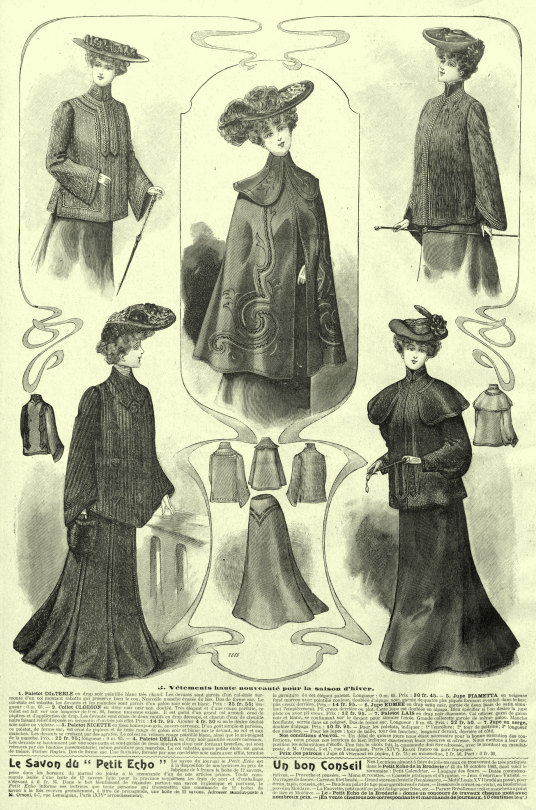
Le Petit écho de la mode, no. 42, vol. 25, 18 octobre 1903, Paris. 3. Vêtements haut nouveauté pour la saison d'hiver. Ville de Paris / Bibliothèque Forney
No. 1. Paletot Dieterle en drap noir pointillé blanc très chaud. Les devants sont garnis d’un col-étole surmonté d’un col montant rabattu qui préserve bien le cou. Nouvelle manche évasée du bas. Dos de forme sac. Le col-étole est rabattu, les devants et les manches sont garnis d’un galon soie noir et blanc. Prix: 25 fr. 55; longueur: 0 m. 65.
No. 2. Collet Clodion en drap cuir noir non doublé. Très élégant et d’une coupe parfaite, ce collet est fait sur une longueur de 0 m. 50, bonne moyenne exigée. Il est garni d’un grand col arrondi orné de piqûres et d’application de drap. Les devants sont ornés de deux motifs en drap découpé, et chacun d’eux de chenille noire faisant relief disposés en serpentin d’un très joli effet. Prix: 14 fr. 95. Ajouter 4 fr. 50 si on le désire doublé soie noire ou violette.
No. 3. Paletot Nicette en tissu homespun gris, envers carreaux. D’un goùt simple et parisien, ce paletot, de forme sac, est orné de piqûres et de trois rangs de galon noir et blanc sur le devant, au col et aux manches. Les devants se croisent par des agrafes. Le col est en velours rouge pointillé blanc, ainsi que le mi-poignet de la manche. Prix: 22 fr. 75; longueur: 0 m. 65.
No. 4. Paletot Delia en drap noir pointillé envers carreaux. Les devants se boutonnent par une sous-patte et sont garnis de deux appliques drap noir formant bretelles, qui sont retenues par des boutons passementerie: même garniture aux manches. Le col rabattu, genre petite étole, est garni de même. Poches Raglan. Dos de forme sac. Une fantaisie, formée par une cordelière soie noire avec effilé, termine la garniture de cet élégant paletot. Longueur: 0 m. 65. Prix: 30 fr. 45.
No. 5. Jupe Fiametta en neigeuse fond marron avec pointillé couleur, doublée d’alpaga noir, garnie de quatre plis piqués formant éventail dans le bas; plis creux derrière. Prix: 14 fr. 95.
No. 6. Jupe Edmee en drap satin noir, garnie de deux biais de satin simulant l’empiècement. Pli creux derrière ou plat. Cette jupe est doublée en alpaga. Bien spécifier si l’on désire la jupe plate ou avec pli creux. Prix : 12 fr. 95. — 7. Paletot LAIS en drap noir diamanté. Col officier garni de galon noir et blanc, se continuant sur le devant pour simuler l’étole. Grande collerette garnie de même galon. Manche bouffante, serrée dans un poignet, Dos de forme sac. Longueur: 0 m. 65. Prix: 22 fr. 50.
No. 7. Jupe en serge, doublée d’alpaga. Prix: 10 fr. 95.
Pour les paletots, indiquer: 1. l’encolure; 2. tour de poitrine; 3. longueur des manches. — Pour les jupes: tour de taille, tour des hanches; longueur devant, derrière et côté.
—
No. 1. Dieterle overcoat in very warm white dotted black cloth. The fronts are trimmed with a stole collar topped with a high turn-down collar which protects the neck well. New flared bottom sleeve. Bag-shaped back. The stole collar is turned down, the fronts and sleeves are trimmed with black and white silk braid. Price: 25.55 fr.; length: 0.65 m.
No. 2. Clodion collar in unlined black leather cloth. Very elegant and with a perfect cut, this collar is made to a length of 0 m. 50, good average required. It is trimmed with a large rounded collar decorated with stitching and cloth appliqué. The fronts are decorated with two patterns in cut cloth, each of them in black chenille in relief arranged in a serpentine pattern for a very pretty effect. Price: 14.95 fr. Add 4.50 fr. if desired, lined in black or purple silk.
No. 3. Nicette coat in gray homespun fabric, check reverse. With a simple, Parisian taste, this bag-shaped overcoat is decorated with stitching and three rows of black and white braid on the front, collar and sleeves. The fronts are crossed with staples. The collar is in red velvet with white dots, as is the mid-cuff of the sleeve. Price: 22.75 fr.; length: 0.65 m.
No. 4. Delia overcoat in black dotted cloth with check backing. The fronts are buttoned with an under-placket and are trimmed with two black cloth appliques forming straps, which are held in place by trimmings buttons: same trim on the sleeves. The turn-down collar, like a small stole, is trimmed in the same way. Raglan pockets. Bag-shaped back. A fantasy, formed by a black silk cord with tapering, finishes the trim of this elegant overcoat. Length: 0.65 m. Price: 30.45 fr.
No. 5. Fiametta skirt in snowy brown background with colored dotted lines, lined with black alpaca, trimmed with four stitched pleats forming a fan at the bottom; box pleats behind. Price: 14.95 fr.
No. 6. Edmee skirt in black satin cloth, trimmed with two satin bias strips simulating the yoke. Box pleat behind or flat. This skirt is lined in alpaca. Please specify whether you want a flat skirt or a box pleat. Price: 12 fr. 95. — 7. LAIS overcoat in diamond-cut black cloth. Officer collar trimmed with black and white braid, continuing down the front to simulate a stole. Large collar trimmed with the same braid. Puff sleeve, tightened in one wrist, Bag-shaped back. Length: 0.65 m. Price: 22.50 fr.
No. 7. Twill skirt, lined with alpaca. Price: 10.95 fr.
For overcoats, indicate: 1. the neckline; 2. chest measurement; 3. sleeve length. — For skirts: waist measurement, hip measurement; length front, back and side.
#Le Petit écho de la mode#20th century#1900s#1903#on this day#October 18#periodical#fashion#fashion plate#description#Forney#dress#cape#coat#winter
21 notes
·
View notes
Note
One day I would to write an essay on how Spain systematically denying Basques, Canarians, Catalans and Galicians their identity and instead calling them "Spanish" and "Hispanic" is a form of imperialism (like... Franco literally attempted ethnic cleasing against non-Castilians, did we all forget this)
Kaixo anon!
Let's not forget, it's true. But it wasn't just Franco, it started way earlier, with the arrival of the Bourbon dinasty to Spain.
The amazigh languages of the Canary islands are thought to have been lost around the late 18th century, early 19th.
1768 SPAIN: New law passed that forces to teach solely in Spanish in Aragón and Catalunya; it was extended to the whole territory in 1780.
1772 SPAIN: Another law banned all merchants to have their bookkeeping in any language but Spanish.
1776 SPAIN: Printing books in Català and Euskara was prohibited.
1789 FRANCE: disappearance of every old regional law and language. Books not written in French were burnt and the use and teaching of any other language was punished.
1794 FRANCE: Education must be solely in French, any other language became prosecuted.
1801 SPAIN: all theater plays and songs in any other language but Spanish became banned. Also dancing to non-Spanish songs.
1803 SPAIN: it's documented the first report of physical punishment for speaking in Euskera at school.
1857 SPAIN: Spanish Grammar and Ortography became the only and mandatory text book at public schools.
1862 SPAIN: Using any language but Spanish in any public document was prohibited.
1867 SPAIN: another law banning theater plays in Català or Euskera.
1876 SPAIN: Basque old laws became banned. According to Madrid newspaper "El Imparcial": "Taking away their old laws isn't enough, we now have to take their language away."
1896 SPAIN: Speaking on the phone or sending telegraphs in Basque or Català became illegal.
1902 SPAIN: Any teacher that taught in Català or Euskera began to be punished.
1903 FRANCE: another law banning Euskera & Català in school.
1923 SPAIN: Euskera & Català became banned from official events.
1925 SPAIN: every textbook not written in Spanish were removed; teachers that didn't teach in Spanish were suspended from work without pay.
1930 SPAIN: Every local institution is forced to keep their visitor's book and registrations only in Spanish.
1937 SPAIN: Prohibition of speaking Basque and every sign of Basque culture, ie using Basque names, playing Basque instruments, wearing Basque colors. The punishments were from social humiliations to jail or execution. Same thing happened in Catalunya.
1938 SPAIN: Only Spanish names accepted. In church, masses just in Spanish, with a permission of only a 10 min. preach in Basque if nobody understood Spanish.
1939 SPAIN: Signs in Euskera & Català in hotels were removed.
1940 SPAIN: Signs in Euskera & Català in justice courts and shops were removed.
1940 SPAIN: Public workers forced to speak just in Spanish or face dismissal. Every movie - national or international - is forced to have its dialogues in Spanish.
1944 SPAIN: Euskera & Català again banned from public documents and even tombs.
1947 SPAIN: Euskera & Català banned from magazines.
1948 SPAIN: Again, Euskera & Català banned from schools.
1954 SPAIN: Euskera & Català banned from every radio station.
1964 SPAIN: It became illegal to feature Euskera & Català in records or advertising.
1978-2015 SPAIN & FRANCE: Still Euskera & Català are unregulated in France, and in Spain in places like Trebiñu.
[we didn't include galego because in the source we use it didn't and we're not completely sure it was included in all these laws, but we're 95% convinced it was too, so.. include it in your heads.]
Source
The Spanish and French governments have tried SO SO SO hard during the last 300 years to erase us. Good thing is we're more stubborn and proud than them.
#euskadi#euskal herria#basque country#pais vasco#pays basque#catalunya#canarias#euskera#euskara#català#galego#galiza#minoritized languages#spain#france#politics#history#anons
196 notes
·
View notes
Text

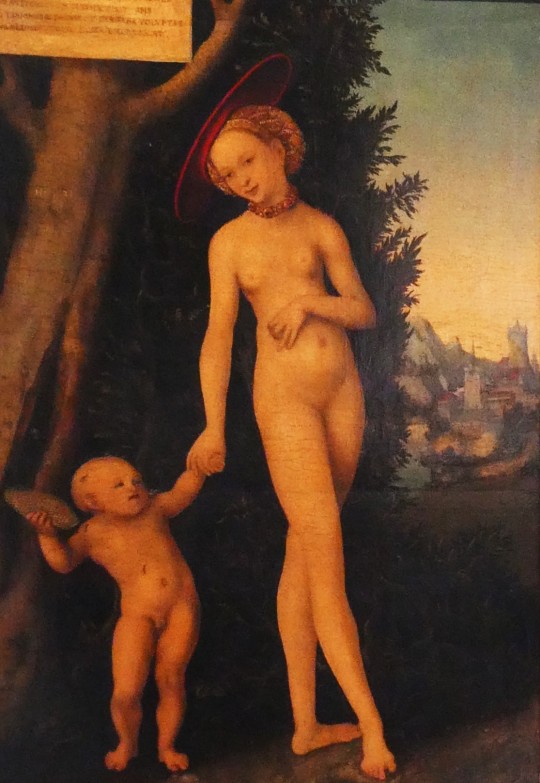


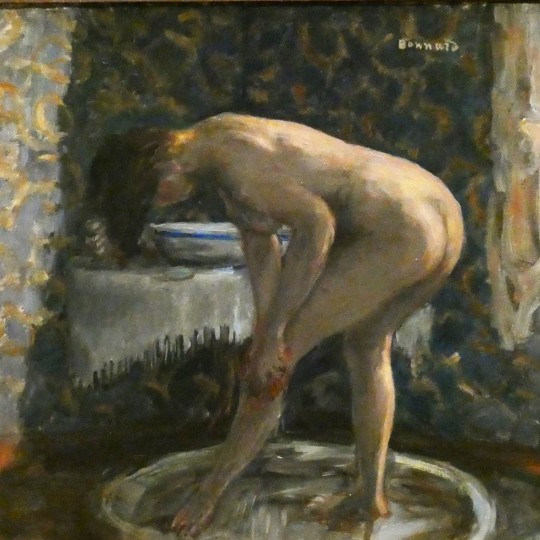
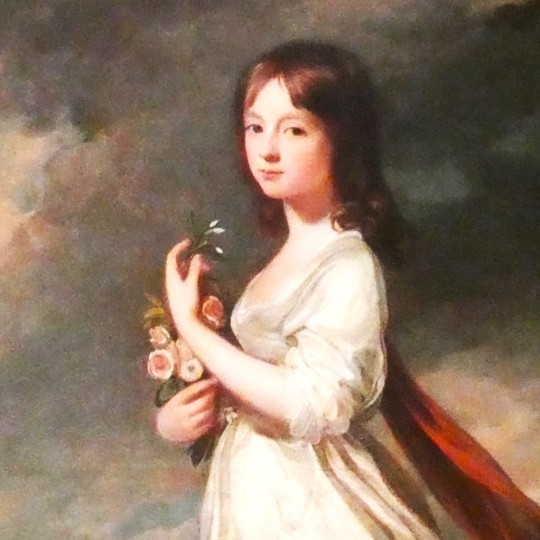
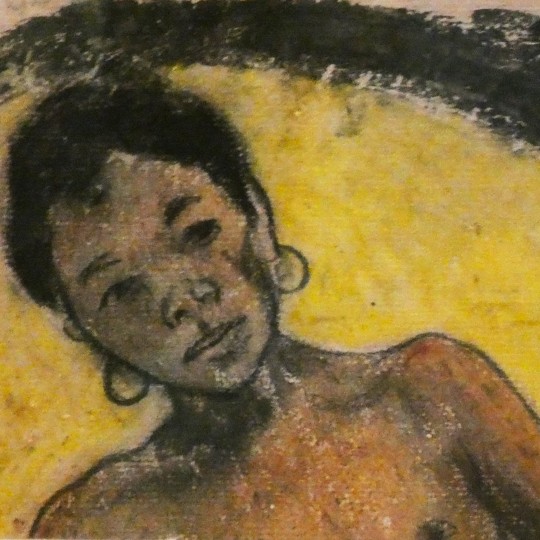
Mercredi
Les jours se suivent, etc... En fin de matinée, virée en ville sous un ciel infiniment bleu jusqu'à un savoureux restaurant libanais de la rue Gambetta, puis direction l'hôtel d'Assézat qui abrite la Fondation Bemberg, enfin rouverte après des années de travaux. Des centaines de peintures, sculptures, meubles et objets, de l'Antiquité à la première moitié du XXe siècle, des dizaines de signatures prestigieuses du Tintoret à Picasso en passant par Monet et Rodin, et dans cette profusion quelques œuvres qui me sont chères. De haut en bas : Elisabeth Louise Vigée-Le Brun, "Portrait de la comtesse von Kagenek en Flore" (1792), Lucas Cranach l'Ancien, "Vénus et Cupidon volant du miel" (1531), Pierre Bonnard, dont la Fondation Bemberg réunit la plus grande collection au monde : "Autoportrait sur fond blanc, chemise col ouvert" (1930), "La forêt des pins, Le Cannet" (1922), "Femme au tub" (1903), et encore Georges Romney, "Portrait de Miss Frances E. Sage" (1779-82), ou Paul Gauguin, "Etude préparatoire pour Aita tamari vahiné Judith te parari" (1894-95). Quel bonheur !
7 notes
·
View notes
Text
Doofenbracket: Results of Round 1
Long evil monologue post. Many stats
The top three landslides (among the Heinz bracket) were Doofengung (89.86%, 133 to 15), PSAAIC-Inator (83.33%, 19 to 95), and Immigrant (82.30%, 20 to 93)



The three closest matches included two ties! Poet vs Artist, and Young 2D vs Good 2D


(in both cases, the option that I did not vote for will move on to round 2, so Artist and Good Doof-2)
The third closest match was Eggs and Bacon beating I Love Lucy by just 1 vote (59 to 60)

The top three landslides among the Family Bracket were:
Henrietta Hawkenspitt vs Mrs Doofenshmritz (91.60%, 33 to 360)

Hoarfrost vs Hoarfrost Ice Cream (79.83%, 95 to 24)

and The Lady of the Lake vs 1903 Charlene (79.82%, 91 to 23)

The three closest Family matches were Young Roger beating Katt Karr (50.56%, 44 to 45)

Susan vs Susan (51.41%, 86 to 91) [honestly not as close as I'd have expected]

and Uncle Boris vs Uncle Justin (53.19%, 44 to 50)

The biggest Norm matchup landslides, and the biggest landslides overall, are Muffin Time Normbot vs Robot Replica (93.02%, 160 to 12), and Normbots vs Hostile Normbots (92.80%, 116 to 9)


The closest Norm matches were Norm Unleashed beating 1914 (57.25, 79 to 59), and The Minotaur beating Norm's Old Head (57.45%, 60 to 81)


The biggest Vanessa landslide was Vampire Queen beating Adult (82.50%, 99 to 21)

and the closest Vanessa match was Twi'lek beating 1903 Vanessa (65.12%, 45 to 84)

Round 2 starts tomorrow!
#phineas and ferb#pnf#polls on tumblr#tournament polls#doofenshmirtz#heinz doofenshmirtz#doofenbracket#doofenbracket announcements
10 notes
·
View notes
Text
Virginia Foster Durr

Civil rights activist Virginia Foster Durr was born in 1903 in Birmingham, Alabama. Durr was one of the founding members of the Southern Conference for Human Welfare, a coalition to improve living and working conditions in the south and to challenge segregation. She was the vice chair of the Civil Rights Committee, which aimed to abolish the poll tax, a cause that Durr worked towards for many years. She and her husband developed reputations as supporters of the Civil Rights movement. Durr was a friend of Rosa Parks and a staunch supporter of the Montgomery Bus Boycott. She also opened her home to students who had come from out of state to participate in voter registration drives.
Virginia Foster Durr died in 1999 at the age of 95.
Image source: The Times-Dispatch
13 notes
·
View notes
Photo
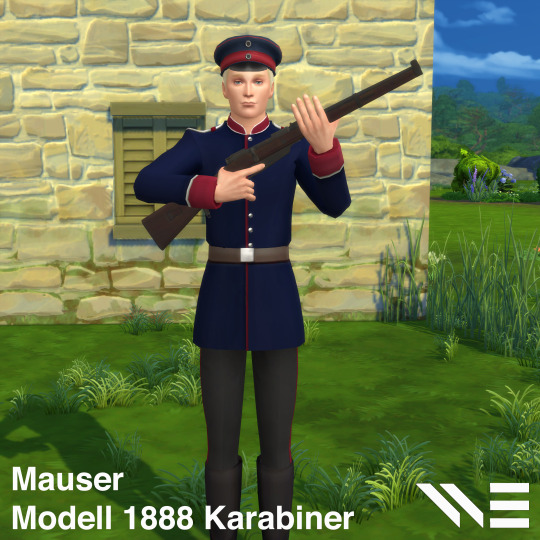



Prussian Era Firearms
2 years ago WildTexan creating a Magnificent Prussian Uniform Which is Published By @javitrulovesims. Today.. We’re Got A Same Honor Creating An Authentic Firearms That Suits Well With The Uniform. Making the Prussian Reenactment Become Completed...
Item Contains:
Gewehr 1888
The Gewehr 88 (commonly called the Model 1888 commission rifle) was a late 19th-century German bolt-action rifle, adopted in 1888. The invention of smokeless powder in the late 19th century immediately rendered all of the large-bore black powder rifles then in use obsolete. To keep pace with the French (who had adopted smokeless powder "small bore" ammunition for their Lebel Model 1886 rifle) the Germans adopted the Gewehr 88 using its own new Patrone 88 cartridge, which was also designed by the German Rifle Commission. The rifle was one of many weapons in the arms race between the Germanic states and France, and with Europe in general. There were also two carbine versions, the Karabiner 88 for mounted troops and the Gewehr 91 for artillery. Later models provided for loading with stripper clips (Gewehr 88/05s and Gewehr 88/14s) and went on to serve in World War I to a limited degree. Unlike many German service rifles before and after, it was not developed by Mauser but the arms commission, and Mauser was one of the few major arms manufacturers in Germany that did not produce Gewehr 88s.
Karabiner 88
Shorter Version of Gewehr 1888's for cavalry or artillerymen the M/88 "Patrone 7.9 mm" was loaded with a 14.6 g (226 gr) round nose bullet that measured 8.08 mm (.318 in) in diameter. In 1894/95 the German Army changed the barrel specifications from 7.9/8.1 mm to 7.9/8.2 mm hoping to improve accuracy and Gewehr 88 rifles made from that date on had different bores. The 8.08 mm (.318 in) bullet diameter however remained unchanged. After 1895 most Gewehr 1888 rifles were regrooved. In 1903, the Germany Army adopted a new service cartridge that fired lighter bullets measuring 8.20 mm (.323 in) in diameter. From then on, many Gewehr 88 rifles were rechambered to fire the new 1903 pattern 7.92×57mm Mauser cartridge becoming Gewehr 88 S rifles.[1] This rechambering required more work as the 7.92×57mm Mauser chambering required a wider chamber throat to take the thicker brass of the new 1903 pattern cartridge. 7.92×57mm Mauser adapted rifles have the receiver marked with a large "S" rollmark. From 1905 the rifles were also converted to use the Gewehr 98 type stripper clip by adding stripper clip guides to the top rear of the receiver and altering the magazine becoming Gewehr 88/05 rifles. After the start of World War 1, some of the remaining Gewehr 88 S rifles were modified to the Gewehr 88/14 standard, which was generally similar to Gewehr 88/05 but with cruder workmanship. Some 88's were sold to various nations or armed groups, or captured in combat and therefore a wide variety of markings can be found such as Bulgarian stars, English proofs, Turkish crescents and symbols, Polish eagles etc. Gew 88's were re-serialized by the army capturing them in some rare cases (i.e.; Greece/Turks) or/and when they were re-barrelled. The markings found on Gew 88's are very extensive and therefore are a topic of their own.
Mauser Gewehr 1889
Improved version of 1888. When the modernizing Belgian Army required a new service rifle all their own, they turned to the existing and proven German designs, bypassing any lengthy, and untimely costly, indigenous initiative in the process. The German design served as the basic framework for the Belgian offering which was slightly modified to suit Belgian military requirements. It was this rifle that turned out to be the very first successful firearm to be produced in number by Fabrique Nationale. The system proved impressive at the 1884 Bavarian Arms Trials. Both firearms were a success, but decision-makers were not convinced that the stripper feed was superior to the en-block system employed by Mannlicher. In response, Mauser started small-scale production of the design in an effort to interest foreign nations, but failed to convince any of the European major powers. The Belgian attache, however, urged his government to contact Mauser, hoping the design might give them a chance to found a domestic arms industry. To compete for Belgian trials, several Belgian arms manufacturers funded the Fabrique Nationale d'Armes de Guerre, now known as FN Herstal. Since the heavy-barreled Mauser with the barrel shroud was deemed superior to the competing FN design and other foreign rifles, FN was granted a license to produce the Mauser rifle. FN's factory was overrun during World War I, so they outsourced production to a facility in Birmingham, England originally set up by the well known gunmaking firm, W. W. Greener and subsequently handed over to the Belgian Government later in the war, and Hopkins & Allen in the United States. Many Belgian Model 1889 rifles were captured by the Imperial German Army and some were modified to fire the 7.92×57mm Mauser cartridge. Paraguay purchased 7,000 Belgian Model 1889s in 1930. Rifles captured by Nazi Germany after 1940 were designated Gewehr 261 (b) (Mle 1889 rifle), Karabiner 451 (b) (Mle 1889 carbines), Karabiner 453 (b) (Mle 1916 carbine) and Gewehr 263 (b) (Mle 1889/36). Models 1889/36 were used by German second-line troops or pro-German organizations such as the Vlaamse Wacht [nl]. Some Model 1889/36 rifles were still in service in Belgian Congo at the time of the independence of the Republic of the Congo-Léopoldville in 1960 and were used during the Congo Crisis.
Reichsrevolver Modell 1883
German officer's sidearm during the late 19th century. models were single-action, solid frame, non-ejecting six-shot revolvers. The caliber was an indigenous 10.6×25mmR with a medium-length cartridge case, comparable to the contemporary .44 Russian round in size and power. Loading was via a gate on the revolver's right side, and the cylinder was released by pulling the hammer to half-cock. Removing empty cartridges could be done by removing the cylinder by withdrawing the axis pin, and then removing the casings by hand, but in actual practice a separate small rod (stored in the ammunition pouch) was used to push the casings out without having to remove the cylinder. A unique feature among these revolvers was the safety lever, which was often applied with the hammer resting in the half-cock position. Most revolvers came with a lanyard ring for attachment to the uniform.
DOWNLOAD
#TS4#ts4cc#ts4 cc#ts4 cc download#ts4 historical#the sims 4 military#ts4military#ts4gun#s4cc#the sims 4#the sims#the sims 4 cc#the sims 4 custom content#history#historical#sims 4 cc#sims 4#sims cas#Decade Challenge#sims 4 decades#the sims 4 decades challenge#ts4 WWI
88 notes
·
View notes
Text

Egy újabb kerek 50 éves bélyegünk van, és ismét a távoli Új-Zélandot vesszük célba. Egy négytagú bélyegsorozat tagja, mely egy neves helyi festőnő munkásságának, Frances Hodgkinsnak állít emléket. A hölgy bár élete és munkássága jelentős részét aztán Angliában töltötte Új-Zéland egyik meghatározó művésze. 1869-ben látta meg a napvilágot Dunedinben, apja ügyvédi tevénkenysége mellett amatőr festő is volt, a helyi művészeti körök prominens tagja, így adott volt számára a háttér. Nővére is híres tájkép festővé vált. Már 1890-ben megrendezi első kiállításait Christchurben és Dunedinben, '95-ben pedig díjat nyer Head of an Old Woman című alkotásával. Nagyon népszerűek lesznek a maorikról készült portréi is, melyen szintén főleg nőket és gyermekeket örökít meg. 1895-96-ban a Dunedini Művészeti Iskolában tanul, majd rögtön ott is marad tanítani, ebből gyűjti össze a pénzt angliai tanulmányaira.
1901-ben hagyja ott végleg Új-Zélandot Európa kedvéért, Anglia mellett sokat utazik és fest Franciaországban, Hollandiában, Olaszországban és Marokkóban egy szintén művész barátnője társaságában. 1903-ban ő lesz az első új-zélandi akinek művét bemutatják a Royal Academy of Arts-ban, Londonban. 1907-ben tartja londoni első önálló kiállítását, ezután pedig Párizsba költözik, ahol 1910-től a Colarossi akadémián tanít, szintén első nőként. Itt saját vízfestő iskolát is alapít.
Az első világháború alatt Cornwallon él és dolgozik, és itt kezd el áttérni az olajfestékre, Cedric Morris hatására akivel együtt dolgozik. 1919-ben visszatér a franciákhoz, itt nagy hatással van rá Matisse és Derain munkássága, de továbbra is megtartja saját egyedi stílusát. A '20-as években egy rövid textildesigneri kitérőt is téve, fordulnak témái az emberekről egyre inkább a tájképek, és a csendéletek felé. Egyre nagyobb nevet szeret magának Londonban, egy galériatulajdonos barátnőjével elkezdenek lehetőséget nyújtani friss és fiatal művészeknek a megjelenésre. A Lefevre galériával szerződése lesz, hogy minden második évben egyéni kiállítást szerveznek friss munkáinak. 1939-ben ő képviselné Nagy-Britanniát a Velencei Biennálén, de a háborús utazási korlátozások miatt, műveit nem tudják elszállítani Olaszországba. A háború után már Nagy-Brittaniában marad, és haláláig, még 70-es éveiben is fest, reumája ellenére. 1947-ben Dorchesterben éri a halál. A mai napig a brit modernizmus egyik kulcsfigurájaként tartják számon, és a britek is (természetesen!) saját jelentős művészüknek tartják. Művei ennek megfelelően vegyesen vannak kiállítva Angliában és Új-Zélandon, de a legnagyobb gyűjtemény, körülbelül 60 alkotásból a Dunedin Public Art Galleryban található, a messzi szigeten.

A bélyegeken négy műve található, különböző korszakokban és témákban, időrendben a névértékek szerint emelkedve. Az én 10 centesem a harmadik a sorban, ez már az angol csendéleti időszak, címe Pajta Picardyban. A többi bélyegen rendre, Maori nő és gyermeke (5 c), A dombtető (8 c), és a legnagyobb értékű 18 centes, kissé avantgárdba hajló Csendélet önarckép.
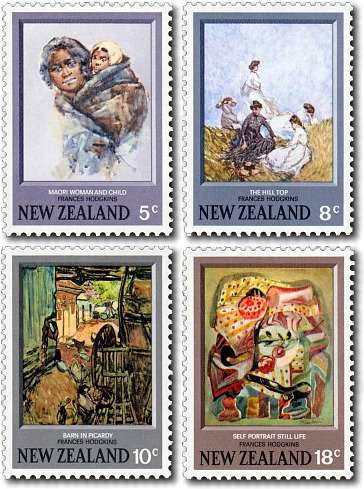
A bélyegekből, bár új-zélandi viszonylatban nem keveset nyomtak, az 5 centesből kétmilliót, a másik háromból mind 1,2-1,2 milliót, azért nem teljesen értéktelenek. Az én 10 centesem állapottól függően 200-400 forintot ér körülbelül, a teljes sorozatot meg olyan 800-1600 forint között lehet beszerezni, szintén használtságtól függően.
#bélyeg#stamp#új-zéland#new-zealand#1973#frances hodgkins#painter#festő#10 cent#brit modernizmus#british modernism
5 notes
·
View notes
Text
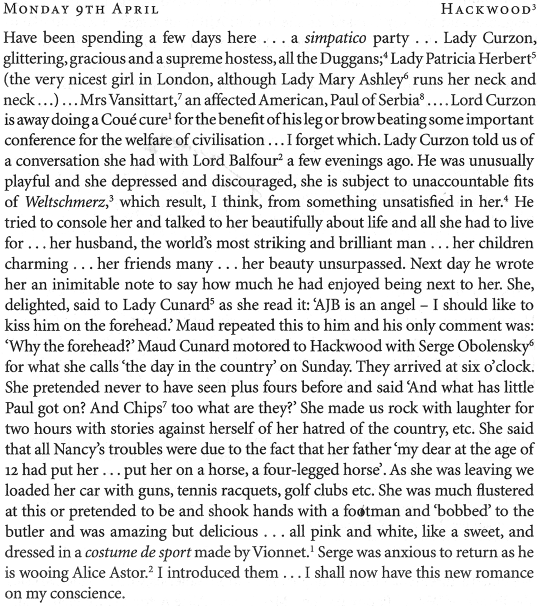
Henry ‘Chips’ Channon: The Diaries (Vol. 1), 1918-38, entry for 9th April 1923
—
Monday 9th April — Hackwood¹
Have been spending a few days here … a simpatico party … Lady Curzon, glittering, gracious and a supreme hostess, all the Duggans;² Lady Patricia Herbert³ (the very nicest girl in London, although Lady Mary Ashley⁴ runs her neck and neck …) … Mrs Vansittart,⁵ an affected American, Paul of Serbia⁶ …. Lord Curzon is away doing a Coué cure⁷ for the benefit of his leg or brow beating some important conference for the welfare of civilisation … I forget which. Lady Curzon told us of a conversation she had with Lord Balfour⁸ a few evenings ago. He was unusually playful and she depressed and discouraged, she is subject to unaccountable fits of Weltschmerz,⁹ which result, I think, from something unsatisfied in her.¹⁰ He tried to console her and talked to her beautifully about life and all she had to live for … her husband, the world’s most striking and brilliant man … her children charming … her friends many … her beauty unsurpassed. Next day he wrote her an inimitable note to say how much he had enjoyed being next to her. She, delighted, said to Lady Cunard¹¹ as she read it: ‘AJB is an angel — I should like to kiss him on the forehead’. Maud repeated this to him and his only comment was: ‘Why the forehead?’ Maud Cunard motored to Hackwood with Serge Obolensky¹² for what she calls ‘the day in the country’ on Sunday. They arrived at six o’clock. She pretended never to have seen plus fours before and said ‘And what has little Paul got on? And Chips¹³ too what are they?’ She made us rock with laughter for two hours with stories about herself and her hatred of the country, etc. She said that all Nancy’s troubles were due to the fact that her father ‘my dear at the age of 12 had put her … put her on a horse, a four-legged horse’. As she was leaving we loaded her car with guns, tennis racquets, golf clubs, etc. She was much flustered at this or pretended to be and shook hands with a footman and ‘bobbed’ to the butler and was amazing but delicious … all pink and white, like a sweet, and dressed in a costume de sport made by Vionnet.¹⁴ Serge was anxious to return as he is wooing Alice Astor.¹⁵ I introduced them … I shall now have this new romance on my conscience.
—
1. Hackwood Park, near Basingstoke in Hampshire, rented by Lord Curzon from 1906 until 1925.
2. Lady Curzon’s children by her first marriage: Alfred Duggan (1903–64), who became a minor novelist; Hubert Duggan (1904–43), Tory MP for Acton from 1931 to 1943 and anti-appeaser in the 1930s; and (Grace) Marcella Duggan (1907–95).
3. Patricia Herbert (1904–94), by courtesy Lady Patricia Herbert from 1913, daughter of the 15th Earl of Pembroke and 12th Earl of Montgomery, married in 1928 William Henry Smith, 3rd Viscount Hambleden (1903–48). She was a Lady of the Bedchamber to Queen Elizabeth from 1937 until 1994.
4. Lady Mary Sibell Ashley-Cooper (1902–36), daughter of the 9th Earl of Shaftesbury, married in 1928 Napier George Henry Sturt (1896–1940), who in 1919 succeeded his father as 3rd Baron Alington of Crichel. He died on active service in Egypt during the Second World War, though of drink rather than in action.
5. Gladys Robinson-Duff (1892–1928), daughter of General William C. Heppenheimer of the United States, married in 1921 Robert Gilbert Vansittart (1881–1957), who would be Permanent Under-Secretary at the Foreign Office from 1930 to 1938, and who would be raised to the peerage in 1941 as 1st Baron Vansittart. Vansittart was also an accomplished novelist, playwright and poet.
6. Prince Paul of Yugoslavia (1893–1976) had known Channon at Oxford and would remain one of his closest friends, and be Prince Regent of Yugoslavia (the Kingdom of the Serbs, Croats and Slovenes) from 1934 to 1941 during the minority of Peter II. He was the nephew of King Peter I and married Princess Olga of Greece and Denmark (1903–97), sister-in-law of Channon’s other closest friend, the Duke of Kent. After treating with the Germans in 1941 Paul was forced from Yugoslavia and forbidden ever to return; the post-war communist regime stripped him of his property and proclaimed him an enemy of the state. Until 1945 the British authorities held him in Kenya under house arrest. Serbia rehabilitated him posthumously in 2011, after which he was reburied with Princess Olga and their son Nicholas.
7. A psychotherapy-based cure featuring auto-suggestion, fashionable but heavily criticised at the time, developed by Émile Coué de la Châtaigneraie (1857–1926), a French psychologist.
8. A. J. Balfour, raised to an earldom in 1922.
9. World-weariness.
10. Curzon was desperate for a male heir (he had three daughters from his first marriage) to the earldom and marquessate he had obtained; various medical procedures had been followed to help Lady Curzon conceive, but no child resulted and the marriage was strained accordingly.
11. Maud Alice Burke (1872–1948), born in San Francisco, married in 1895 Sir Bache Cunard, 3rd Bt (1851–1925), grandson of the shipping line’s founder. They had lived largely apart since 1911, Cunard basing himself in Leicestershire where he enjoyed field sports. In London with their daughter Nancy Clara (1896–1965), Lady Cunard – who after her husband’s death became known as ‘Emerald’ – established one of the leading salons of the era, which thrived until the Second World War. After separating from her husband she became the mistress of Sir Thomas Beecham, the conductor, and funded many of his musical projects.
12. Prince Sergei (‘Serge’) Platonovich Obolensky Neledinsky-Meletsky (1890–1978) had been educated at Oxford and became part of the Russian diaspora after the revolution. He emigrated to America and became a successful businessman.
13. The first time in the diaries that he refers to his nickname.
14. Madeleine Vionnet (1876–1975) was one of Paris’s leading fashion designers of the interwar years.
15. Ava Alice Muriel Astor (1902–56), daughter of John Jacob Astor IV. She and Obolensky married in 1924 and divorced in 1932. She would marry four times before her death at the age of 54.
#chips channon#channon diaries#1923#1920s#grace curzon#alfred duggan#hubert duggan#marcella rice#patricia hambleden#mary alington#gladys vansittart#prince paul of yugoslavia#george curzon#arthur balfour#emerald cunard#prince serge obolensky#nancy cunard#madeleine vionnet#alice astor#hackwood park
7 notes
·
View notes
Photo

I want to know if you dreamed me
⛧Sponsor:
⛧Store´s
⛧Crown: Garmonbozia - Star Crown
Available at Mainstor Garmonbozia
http://maps.secondlife.com/secondlife/Humanity/95/149/1101
⛧Moon: {Fantasy world} Bindi new moon
Available at Mainstor {Fantasy world}
http://maps.secondlife.com/secondlife/Surreal%20Pink/232/162/1903
⛧Horns: [AERTH] Moon Tears Horns
Available at Mainstor [AERTH]
http://maps.secondlife.com/secondlife/Aii%20and%20Ego/123/160/1528
⛧Gloss lipstic: VORTEX Lips 43.0
Available at Mainstor VORTEX
http://maps.secondlife.com/secondlife/Born%20East/112/32/3001
⛧Body tatto: .:: > APPRENTICE < ::.
Available at Mainstor Kaos Tattoo Store
http://maps.secondlife.com/secondlife/Devils%20Landing/143/227/23
⛧Scars: [Snorties] Naughty Xmas Scars
Available at Mainstor [Snorties]
http://maps.secondlife.com/secondlife/White%20Reef/224/65/2023
⛧Shadow & liner: {sangre.} Chonky Shadows & Liner
Available at Mainstor {sangre.}
http://maps.secondlife.com/secondlife/SABLE/126/37/2595
⛧Head Skin: naja // sylv skin lel evox
Available at Mainstor naja
http://maps.secondlife.com/secondlife/LondonMall/156/153/43
⛧Blush: LEWD - Kawaii Blush
Available at Mainstor LEWD
http://maps.secondlife.com/secondlife/Deep%20Passion/131/70/28
⛧Pose: KNIFU. Santa Baby Pose Pack
Available at Mainstor KNIFU.
http://maps.secondlife.com/secondlife/Surreale/80/200/30
2 notes
·
View notes
Text
One of my life goals is to be a polymath. I want to know as much as I can and learn how to put it into use. I think Robert Heinlein, as cringe as he was, was correct about one thing.
"A human being should be able to change a diaper, plan an invasion, butcher a hog, conn a ship, design a building, write a sonnet, balance accounts, build a wall, set a bone, comfort the dying, take orders, give orders, cooperate, act alone, solve equations, analyse a new problem, pitch manure, program a computer, cook a tasty meal, fight efficiently, die gallantly. Specialization is for insects."
Speaking of polymaths, here's a list of people I have respect for for being polymaths.
1. Leonardo Da Vinci: Artist, sculptor, architect, inventor, engineer, scientist, theorist, the true Renaissance man. Painted things like the Mona Lisa, The Last Supper, Lady With An Ermine and Salvator Mundi. Came up with early drafts for the helicopter, airplane, submarine, tank, and various other things. Wrote notebooks and drew sketches of several different subjects, including anatomy, astronomy, botany, cartography, painting, and paleontology.
2. Ben Franklin: You know him, you've seen him on the $100 bill, you probably love him, he's great at a lot of things. The first ever postmaster general of the US, the first ambassador to Sweden and France, invented swimming paddles at just 11 years old, later invented the glass harmonica and Franklin stove, helped print some of the first ever newspapers in America, the New England Courant and later the Philadelphia Gazette, founded the University of Pennsylvania, the first fire department, police force (unfortunately), and hospital, did the famous kite experiment that proved lightning was a form of electricity, drafted and signed the Declaration of Independence and Constitution, came up with many aphorisms thanks to Poor Richard's Almanack (which was like any other almanac plus the aphorisms), the Silence Dogood letters, and many other writings, charted and named the Gulf Stream, laid the groundwork for modern demography, and was probably the first ever shitposter. I could name more stuff but honestly this is enough for me and maybe everyone else.
3. Rabindranath Tagore: The Da Vinci of Asia, arguably. A poet and composer who came up with the words for the Indian and Bangladeshi national anthems; an author who made several famous books including Gitanjali, a Nobel Prize-winning poetry anthology (HE WAS THE FIRST POC TO WIN A NOBEL PRIZE), Gora, and The Home and The World, among other literary works that have been adapted into films time and time again by Indian cinema studios; a playwright whose plays have also been adapted to the big screen frequently; a painter inspired by, among other things, Papua New Guinean masks from the Malagan people, Haida carvings from the Pacific Northwest, and the woodcuts of German artist Max Pechstein; a staunch advocate for Indian independence until his dying days, and a child prodigy, writing poetry as early as 8, and publishing his first poetry collection at 16. More people should be talking about this guy.
And finally 4. W. E. B. Dubois: Black sociologist, historian, author, and civil rights activist. He co-founded the NAACP in 1909, wrote his most famous work, The Souls of Black Folk in 1903, a seminal work of POC literature, was the first Black person to earn a doctorate in history, especially from Harvard (!!!!), and a very active member of the civil rights movement as early as the turn of the century. He is also the person that has lived the longest out of all the people on this list, as he died in 1963, at the ripe old age of 95, one year before the Civil Rights Act passed.
Let me know what you think.
#history#polymath#web dubois#rabindranath tagore#ben franklin#leonardo da vinci#seriously these people are probably the best
4 notes
·
View notes
Text
Títols Real Madrid
El Real Madrid per moltes persones és el millor equip de la història, ja que ha guanyat un total de 129 títols en tota la seva història i avui parlarem de quins títols ha guanyat el Madrid.
Un trofeu al millor club del segle XX (11 de desembre de l'any 2000).

15 Uefa Champions Leagues (1955-56 1956-57 1957-58 1958-59 1959-60 1965-66 1997-98 1999-00 2001-02 2013-14 2015-16 2016-17 2017-18 2021-22 2023-24).

8 Mundials de Clubs (1960 1998 2002 2014 2016 2017 2018 2022).

5 Supercopes d'Europa ( 2002 2014 2016 2017 2022).

2 Copes de la Uefa (1984-85 1985-86).

36 Ligues Espanyoles (1931-32 1932-33 1953-54 1954-55 1956-57 1957-58 1960-61 1961-62 1962-63 1963-64 1964-65 1966-67 1967-68 1968-69 1971-72 1974-75 1975-76 1977-78 1978-79 1979-80 1985-86 1986-87 1987-88 1988-89 1989-90 1994-95 1996-97 2000-01
2002-03 2006-07 2007-08 2011-12 2016-17 2019-20 2021-22 2023-24).

20 Copes del Rei (1904-05 1905-06 1906-07 1907-08 1916-17 1933-34 1935-36 1945-46 1946-47 1961-62 1969-70 1973-74 1974-75 1979-80 1981-82 1988-89 1992-93 2010-11 2013-14 2022-23).

13 Supercopes d'Espanya (1988 1989 1990 1993 1997 2001 2003 2008 2012 2017 2020 2022 2024).

1 Copa de la Liga (1984-85).

2 Petites Copes del Món (1952 1956).

2 Copes Llatines (1955 1957).

1 Copa Iberoamericana (1994).

18 Campeonats Regionals (1903-04 1904-05 1905-06 1906-07 1907-08 1912-13 1915-16 1916-17 1917-18 1919-20 1921-22 1922-23 1923-24 1925-26 1926-27 1928-29 1929-30 1930-31).
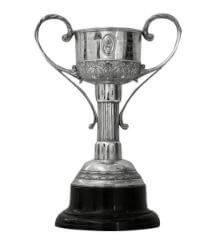
5 Trofeus Mancomunats (1931-32 1932-33 1933-34 1934-35 1935-36).

En conclusió, podem veure que té una gran varietat de títols en el seu palmarès i té molts títols antics.
0 notes
Text
A-ke.P.V. Industries Logo History - Part 1
(5) [1898-1902] {Gaumont-British}
(1) [1902-1903] {Gaumont-British}
(16) [1903-1919] {Gaumont-British}
(3) [1903-1906] {Gaumont-British}
(5) [1903-1908] {Gaumont-British}
(7) [1904-1910] {Loews Theatres}
(2) [1906-1908] {Gaumont-British}
(12) [1908-1920] {Gaumont-British}
(2) [1908-1910] {Gaumont-British}
(18) [1909-1926] {Hoyt’s Pictures}
(11) [1910-1921] {British Pathé}
(1) [1910-1911] {Gaumont-British}
(6) [1910-1916] {Loews Theatres}
(2) [1911-1913] {Loews Theatres}
(1) [1911-1912] {West’s Pictures}
(1) [1911-1912] {Spencer’s Pictures}
(1) [1911-1912] {Amalgamated Pictures}
(1) [1912-1913] {General Film Company}
(4) [1911-1915] {Gaumont-British}
(5) [1912-1916] {Famous Players Theatres}
(18) [1913-1931] {Union Theatres}
(2) [1913-1915] {Gaumont-British}
(4) [1914-1918] {Gaumont-British}
(2) [1915-1917] {Loews Theatres}
(8) [1916-1924] {British Pathé}
(5) [1916-1921] {Famous Players Theatres}
(1) [1916-1917] {Loews Theatres}
(4) [1917-1921] {Loews Theatres}
(5) [1917-1922] {Loews Theatres}
(6) [1917-1923] {Loews Theatres}
(4) [1918-1922] {British Pathé}
(3) [1918-1921] {Famous Players Theatres}
(6) [1918-1924] {Loews Theatres}
(1) [1918-1919] {Gaumont-British}
(11) [1919-1930] {Gaumont-British}
(16) [1919-1934] {Woolf & Freedman FIlm Service}
(20) [1920-1939} {Dubinsky Bros.}
(12) [1920-1931] {Dubinsky Bros.}
(0) [1920] [Loews Theatres}
(1) [1920-1921] {Famous Players Theatres}
(2) [1921-1923] {British Pathé}
(6) [1921-1927] {Famous Players Theatres}
(8) [1921-1929] {British Pathé}
(2) [1922-1924] {Loews Theatres}
(1) [1923-1924] {Loews Theatres}
(1) [1924-1925] {Loews Theatres}
(4) [1924-1928] {Loews Theatres}
(4) [1924-1928] {Loews Theatres}
(36) [1924-1960] {Loews Theatres}
(60) [1924-1984] {Loews Theatres}
(32) [1924-1956] {Loews Theatres}
(53) [1924-1976] {United Artists Theatres}
(54) [1926-1980] {Hoyts Theatres Limited}
(30) [1926-1956] {Loews Theatres}
(27) [1926-1953] {Loews Theatres}
(95) [1927-2021] {ABC Cinemas}
(91) [1927-2017] {ABC Cinemas}
(60) [1927-1986] {ABC Cinemas}
(11) [1927-1937] {British International Pictures}
(7) [1927-1933] {British International Pictures}
(1) [1927-1928] {Loews Theatres}
(3) [1927-1930] {Famous Players Theatres}
(69) [1928-1997] {Odeon Cinemas}
(28) [1928-1956] {Loews Theatres}
(25) [1928-1953] {Loews Theatres}
(4) [1928-1932] {Loews Thatres}
(7) [1929-1936] {British Pathé}
(9) [1929-1938] {British Pathé}
(12) [1929-1941] {British Pathé}
(6) [1930-1936] {Famous Players Theatres}
(10) [1930-1940] {Gaumont-British}
(67) [1930-1997] {Odeon Cinemas}
(4) [1931-1935] {Gaumont-British}
(14) [1931-1945] {Greater Union Theatres}
(1) [1931-1932] {Publix-Dubinsky Bros.}
(7) [1932-1939] {Dubinsky Bros.}
(3) [1932-1935] {Loews Theatres}
(38) [1933-1971] {Associated British Picture Corporation}
(22) [1933-1955] {Associated British Picture Corporation}
(22) [1934-1956] {Loews Theatres}
(19) [1934-1953] {Loews Theatres}
(5) [1935-1939] {Midwest Drive-In Theatres}
(6) [1935-1941] {Gaumont-British}
(10) [1935-1944] {Pinewood Studios}
(9) [1935-1944] {General Film Distributors}
(20) [1935-1955] {General Film Distributors}
(62) [1935-1997] {General Film Distributors}
(51) [1936-1987] {Famous Players Theatres}
(19) [1937-1956] {Gaumont-British}
(7) [1937-1944] {General Film Distributors}
(18) [1937-1955] {General Film Distributors}
(60) [1937-1997] {General Film Distributors}
(41) [1938-1978] {Odeon Theatres (Canada)}
(21) [1939-1960] {Midwest Drive-In Theatres}
(17) [1939-1956] {British Pathé}
(0) [1939] {Loews Theatres}
(8) [1939-1947] {Durwood-Dubinsky Bros.}
(4) [1940-1944] {Gaumont-British}
(44) [1941-1984] {Syufy Luxury Theatres}
(2) [1941-1943] {British Pathé}
(14) [1941-1955] {Gaumont-British}
(39) [1941-1979] {Odeon Theatres (Canada)}
(5) [1942-1947] {Gaumont-British}
(22) [1942-1964] {Gaumont-British}
(18) [1943-1960] {Anglo-Amalgamated Films}
(0) [1943] {British Pathé}
(4) [1943-1947] {British Pathé}
(27) [1943-1970] {Gaumont-British}
(1) [1944-1945] {Gaumont-British}
(38) [1944-1982] {Pinewood Studios}
(29) [1944-1973] {J. Arthur Rank Enterprise}
(53) [1944-1997] {J. Arthur Rank Enterprise}
(13) [1945-1958] {Greater Union Theatres}
(3) [1945-1948] {British Pathé}
(2) [1945-1947] {Gaumont-British}
(15) [1945-1960] {Odeon Theatres (Canada)}
(0) [1946] {British Pathé}
(21) [1947-1968] {Durwood Theatres}
(16) [1950-1966] {Durwood Theatres}
(18) [1952-1970] {British Pathé}
(3) [1953-1956] {Loews Theatres}
(3) [1953-1956] {Loews Theatres}
(18) [1954-1971] {Village Theatres}
(4) [1954-1958] {Famous Players Theatres}
(14) [1955-1969] {Associated British Picture Corporation}
(16) [1955-1971] {Gaumont-British}
(14) [1956-1970] {British Pathé}
(14) [1956-1970] {Gaumont-British}
(3) [1956-1959] {Loews Theatres}
(2) [1956-1958] {Loews Theatres}
(30) [1957-1987] {Loews Theatres}
(29) [1957-1986] {Loews Theatres}
(7) [1958-1965] {Amalgamated Holdings Limited}
(19) [1958-1977] {Famous Players Theatres}
(5) [1959-1964] {Loews Theatres}
(4) [1960-1964] {General Drive-In Corporation}
(12) [1960-1971] {Roadshow Films}
(18) [1960-1978] {Odeon Theatres (Canada)}
(10) [1961-1971] {Anglo-Amalgamated Films}
(9) [1962-1971] {Anglo-Amalgamated Films}
(0) [1964] {Anglo-Amalgamated Films}
(2) [1964-1966] {General Cinema Corporation}
(6) [1964-1970] {Loews Theatres}
(10) [1965-1975] {Greater Union Organisation}
(48) [1965-2012] {Landmark Cinemas}
(20) [1966-1986] {General Cinema Corporation}
(1) [1966-1967] {General Cinema Corporation}
(17) [1967-1984] {General Cinema Corporation}
(28) [1967-1994] {Cannon Films}
(2) [1967-1969] {Anglo-Amalgamted Films}
(11) [1968-1979] {United Artists Theatres}
(1) [1967-1968] {Durwood Theatres}
(1) [1968-1969] {Durwood Theatres}
(1) [1968-1969] {American Royal Cinemas}
(1) [1969-1970] {Associated British Productions Corporation}
(1) [1969-1970] {EMI Film Productions}
(0) [1970] {EMI Film Productions}
(1) [1970-1971] {EMI Film Productions}
(1) [1970-1971] {Anglo-EMI Film Distributors Ltd.}
(11) [1969-1980] {American Multi Cinema}
(4) [1969-1973] {American Multi Cinema}
(5) [1969-1974] {American Multi Cinema}
(24) [1970-1994] {Cannon Films}
(22) [1970-1992] {British Pathé}
(15) [1970-1985] {British Pathé}
(10) [1970-1980] {Gaumont-British}
(21) [1970-1991] {Loews Theatres}
(15) [1970-1985] {Loews Theatres}
(9) [1970-1979] {Loews Theatres}
(14) [1971-1985] {Village Theatres}
(14) [1971-1985] {Roadshow Films}
(8) [1971-1979] {Roadshow Films}
(13) [1971-1984] {Cannon Films}
(3) [1971-1974] {Anglo-EMI Film Distributors Ltd.}
(2) [1971-1973] {Anglo-EMI Film Distributors Ltd.}
(9) [1971-1980] {Gaumont-British}
(4) [1973-1977] {American Multi Cinema}
(23) [1973-1996] {The Rank Organisation}
(4) [1974-1978] {EMI Film Distributors}
(3) [1974-1977] {EMI Film Distributors}
...
0 notes